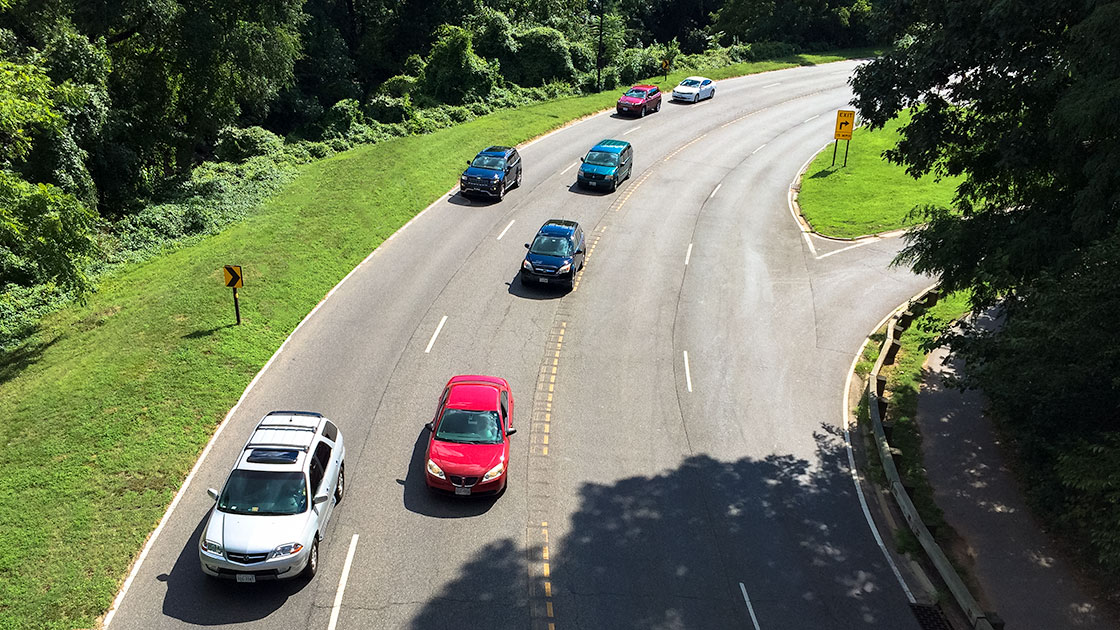Drivers who drift from lane and crash often dozing or ill
September 1, 2016

Drivers who crash as a result of drifting out of their lanes often are asleep, suffering a medical emergency, or blacked out due to drug or alcohol use, IIHS researchers have found. Among the lane-drift crashes studied, incapacitation reportedly played a role in 34 percent of collisions and 42 percent of crashes resulting in fatal or serious injuries.
The finding is important for the development of crash avoidance technology. If lane-drift crashes are a result of incapacitation, lane-keeping assist systems will need to do more to prevent crashes than simply nudge vehicles back into their lane.
Single-vehicle crashes in which vehicles left the roadway accounted for 40 percent of fatal crashes and 21 percent of nonfatal injury crashes in 2014. Head-on collisions and sideswipes, which also can be caused by lane departures, accounted for another 12 percent of fatal crashes and 10 percent of injury crashes.
Crash avoidance technology that can help drivers stay in their lanes has the potential to prevent many of those deaths and injuries. Lane departure warning — which tracks a vehicle's position and alerts the driver if the vehicle strays across lane markings without the turn signal being activated — has become an increasingly common feature. So far, the crash reduction results for lane departure warning have been disappointing.
Just as automatic braking was the next logical step after forward collision warning was developed, systems that actively keep vehicles in their lanes instead of or in addition to issuing a warning have started to appear on vehicles. Many more such lane-keeping assist systems are in development.
Whether or not these systems can prevent a crash depends in part on why the lane departure occurred and how the system responds if the driver doesn't take control after the system has intervened.
"If drivers are letting their vehicles drift from the lane because they are momentarily distracted, lane-keeping assist could help," says Jessica Cicchino, vice president for research at IIHS and the study's lead author. "However, if drivers are physically unable to control the vehicle, it's not enough to only nudge the car back into the lane. In such cases, a crash avoidance system would need to bring the vehicle to a stop on the side of the road."
One way to accomplish that would be to combine lane-keeping technology with in-vehicle driver monitoring that can detect the onset of a physical event, the authors note.
To determine the role that physical factors play in lane departures, the researchers looked at 631 lane-drift crashes from a detailed federal database of serious crashes in which at least one passenger vehicle was towed from the scene and emergency medical services were called. The crashes studied occurred during 2005-07.
Crash details came from interviews with drivers, passengers, witnesses and first responders; inspections of vehicles and crash scenes; and medical records.
In 17 percent of the crashes, the driver was sleeping, and in another 17 percent, the driver was otherwise incapacitated. The latter category includes drivers who lost consciousness due to drugs or alcohol, seizures, heart attacks, strokes or diabetic shock.
In the 124 lane-drift crashes resulting in fatal or serious injuries, 21 percent of drivers were asleep. The same percentage were otherwise incapacitated.
When conscious drivers with blood alcohol concentrations of 0.08 percent or higher or other physical conditions were included, lane-drift crashes involving driver physical factors totaled 47 percent of all severities and 56 percent of ones with fatal or serious injuries.
One limitation of the study is that the database used includes only crashes that occur between 6 a.m. and midnight, while many crashes that result from sleeping or blacked-out drivers occur after midnight.
Critical reasons behind lane-drift crashes
All severities
Fatal or serious injuries